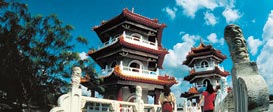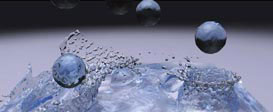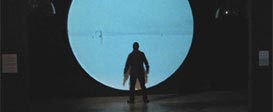Shape Modelling
![]() Full Conference
Full Conference ![]() One-Day Full Conference
One-Day Full Conference
Thursday, 11 December
08:00 - 10:15
Room 303, 304, 305
Session Chair: Tao Ju
Single Image Tree Modelling
A simple and rapid method to generate a realistic 3D tree model from a single image.
Ping Tan
National University of Singapore
Tian Fang
Peng Zhao
Jianxiong Xiao
Long Quan
Hong Kong University of Science and Technology
Sketch-Based Tree Modelling Using Markov Random Field
A new system for converting a free-hand tree sketch into a full 3D model that is complex and realistic-looking. The problem is formulated as Markov random field.
Xuejin Chen
University of Science and Technology of China
Boris Neubert
Universität Konstanz
Ying-Qing Xu
Microsoft Research Asia
Oliver Deussen
Universität Konstanz
Sing Bing Kang
Microsoft Research Redmond
Space-Time Surface Reconstruction Using Incompressible Flow
This work deals with the problem of reconstructing watertight objects deforming across time. The process takes advantage of space-time coherence and adopts a global approach considering all frames simultaneously.
Andrei Sharf
Dan Anthony Alcantara
University of California, Davis
Thomas Lewiner
Pontifícia Universidade Católica do Rio de Janeiro
Chen Greif
Alla Sheffer
The University of British Columbia
Nina Amenta
University of California, Davis
Daniel Cohen-Or
Tel-Aviv University
Non-Homogeneous Resizing of Complex Models
Resizing of 3D models can be very useful when creating new models or placing models inside different scenes. However, straightforward nonuniform scaling can destroy features and lead to serious visual artifacts. This paper introduces a method that resizes 3D models in an intuitive way, protecting model features and structure.
Vladislav Kraevoy
Alla Sheffer
The University of British Columbia
Ariel Shamir
Interdisciplinary Center Herzliya
Daniel Cohen-Or
Tel-Aviv University
Mesh Ensemble Motion Graphs: Data-Driven Mesh Animation With Constraints
This approach to data-driven animation of high-dimensional mesh ensembles, such as tree-structured botanical models, proposes a randomized space-time optimization algorithm for precomputing smooth asynchronous transitions that also avoid introducing non-physical self-collisions.
Doug L. James
Christopher D. Twigg
Andrew Cove
Robert Y. Wang
Cornell University
(Published in: ACM Transactions on Graphics 26(4), October 2007)









